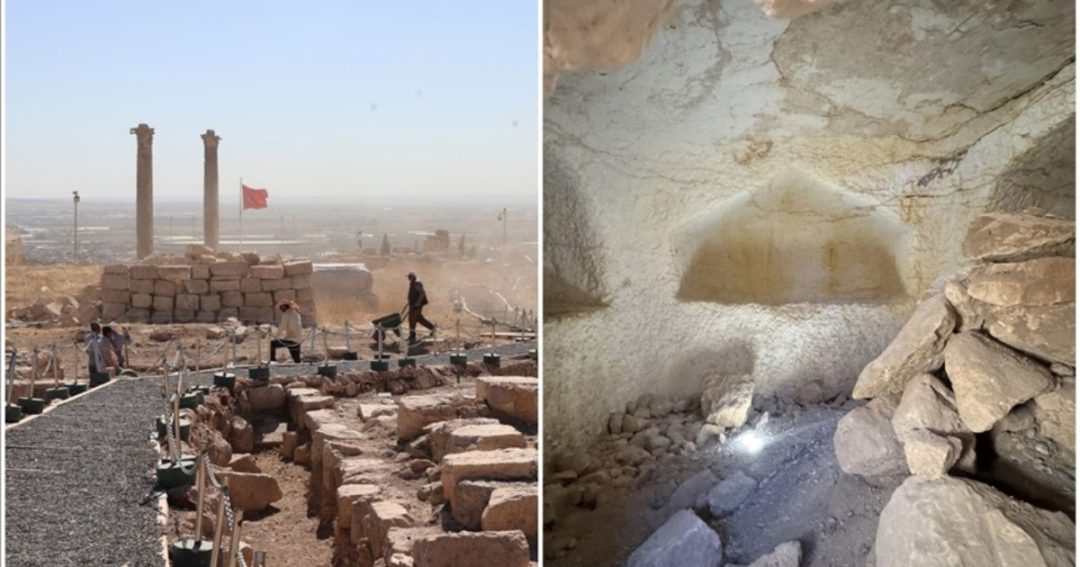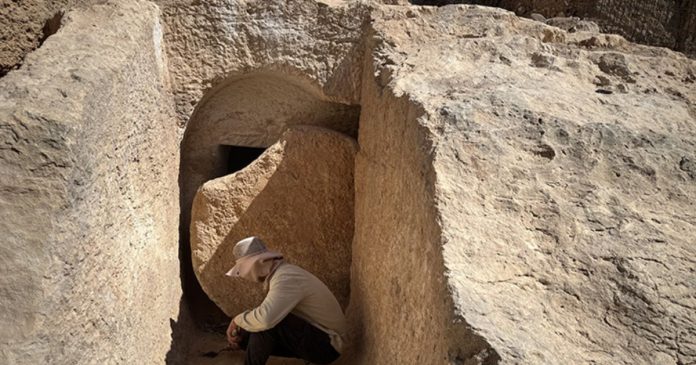A team of archaeologists working within the ancient walls of Urfa Castle (Şanlıurfa Kalesi) has uncovered a remarkable discovery: a sealed, rock-cut tomb dating back to the Late Antique period (3rd–8th centuries AD). This unprecedented find, buried within the castle’s inner citadel, could reshape our understanding of the site’s historical significance.

A Tomb of High Status
The excavation, led by Prof. Dr. Gülriz Kozbe of Batman University, revealed a well-preserved burial chamber during investigations on Dambak Hill. Several key elements suggest the tomb was constructed for an individual of notable rank:
- Sealed Entrance: The tomb, accessed through a short passageway (dromos), remains sealed with a massive circular stone slab, untouched since antiquity. The intact seal hints at undisturbed contents.
- Ancient Inscription: An inscription above the tomb’s entrance, believed to be in Syriac, is currently under analysis and may offer critical clues about the identity of the deceased.
- Architectural Features: The presence of arched niches —often seen in elite, multi-chambered tombs—further supports the theory of a high-status burial.
“This is a highly significant discovery,” said Prof. Kozbe. “A sealed tomb with klineler, found within the core of Urfa Castle, is unprecedented and strongly suggests a burial of elevated importance.”
Possible Connection to the Osroene Kingdom
The tomb’s architectural style and strategic location have led researchers to propose a compelling hypothesis: the chamber may belong to the Osroene Kingdom—a once-powerful Syriac-speaking realm that ruled the region from its capital, Edessa (modern-day Şanlıurfa), until the 3rd century AD.
If confirmed, the tomb could predate many of the region’s known burial sites, such as the rock tombs of Kızılkoyun, which generally date to the 4th–6th centuries. A royal association would significantly elevate the find’s historical value and offer rare, direct evidence of Şanlıurfa’s ancient rulers and Syriac heritage.
A Citadel of Many Eras
This discovery is part of a broader archaeological initiative led by the Turkish Ministry of Culture and Tourism, active since 2020. Excavations continue to reveal the complex, multi-layered history of Urfa Castle, including:
- Byzantine Fortifications: Two previously undocumented bastions (burç) from the East Roman period (11th–12th centuries).
- Mamluk Architecture: The remains of a two-story administrative building dating to the 13th–16th centuries.
- Ottoman Residences: Structural remains from the castle’s Ottoman-era occupation.
What Comes Next
The team is now preparing for the tomb’s careful unsealing and further study. Next steps include:
- Opening the Chamber: Lifting the stone seal to examine the tomb’s interior—potentially containing artifacts, inscriptions, or funerary art.
- Deciphering the Inscription: Full translation of the Syriac text to determine the occupant’s identity and social standing.
- Scientific Dating: Radiocarbon analysis and comparisons with other tombs across the region.

